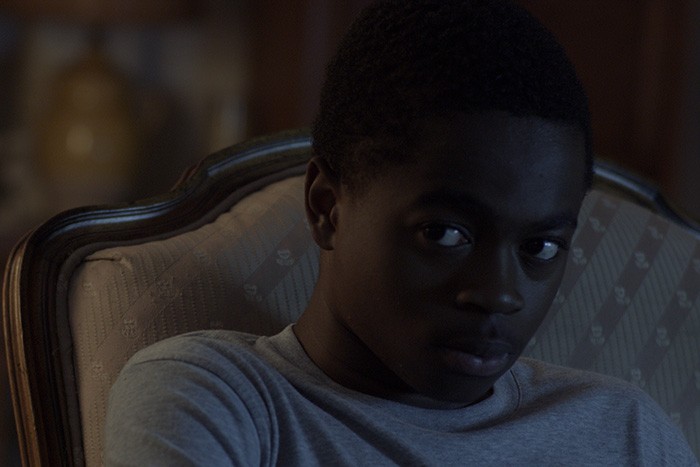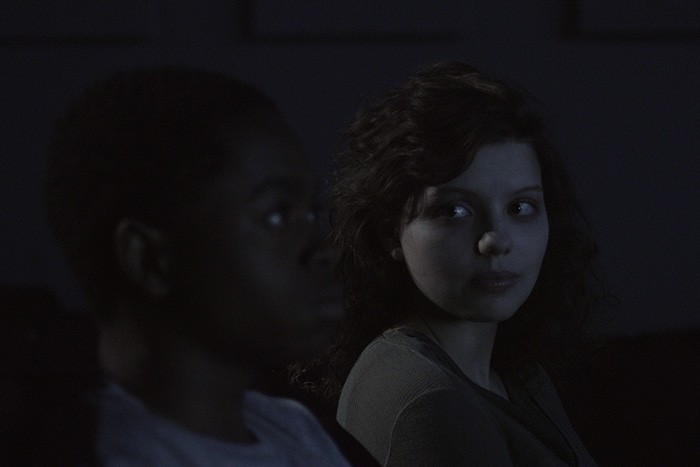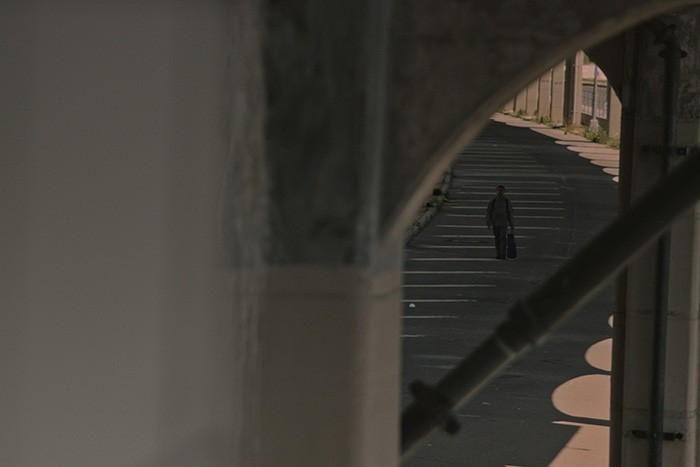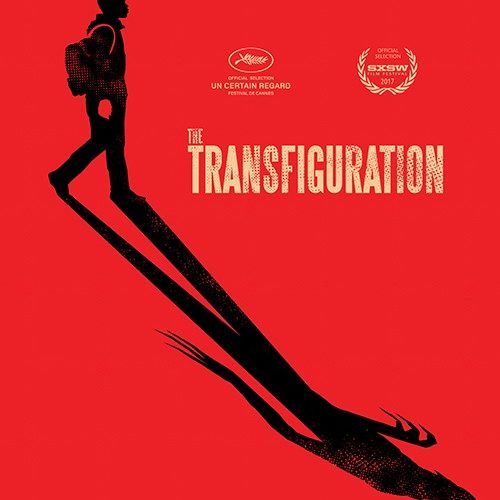Life’s been hard for Milo (Eric Ruffin). His father died when he was eight and his mother committed suicide not too long after. That type of horror will change anyone let alone a child. It turned him towards the macabre—mainly a fascination with movie vampires and the rules with which they exist. It makes sense to gravitate towards the immortal, figures that sustain themselves with the death of others. Tragedy plays a key role in making these monsters stronger and Milo embraces that notion because he knows it only too well. On top of his parents dying are an older brother returned from the military (Aaron Moten’s Lewis), a violent New York City projects residence, and a stigma as “freak” due to his penchant for killing animals.
He epitomizes “loner.” He’s beat up at school and at home—verbally and physically—while his regular appointment with a therapist is anything but honest. His time is therefore spent studying vampires as a species, cataloging the rules that are intrinsic to those existing within his reality. If he cracks that code he can follow it himself and join their ranks. Milo isn’t a stupid kid, but he’s also not well. He can tell the difference between legends like Nosferatu and sparkling heartthrobs in Twilight. He separates “fact” from fiction and orchestrates a plan to join this community emboldened by power in darkness—brutal lives more familiar to him than the idyllic storybook dream he will never truly be afforded. Milo isn’t delusional. He merely seeks to belong.

In this way, Michael O’Shea’s debut The Transfiguration uses its name as commentary on Milo’s unyielding environment. The word is usually steeped in religious undertones to describe one’s evolution into a more beautiful and spiritual form. But we’re watching a boy stripped of his innocence at too young an age strive to find his ideal state through a filter of horror instead. His beauty is that of an unspeakable terror, his goal to shed an identity that has only ever brought pain and suffering. Humanity becomes a crutch, a weakness. Milo must steel himself to emotion and hope because neither exists in his world anymore. Where death is so often meaningless at the hands of criminals thirsty with greed, however, his victims bring him closer to perfection.
There’s no mistaking his actions. The opening scene depicts the teenage Milo sucking the blood from a fresh corpse inside a men’s room stall. He is feeding his obsession—embracing the nightmare of his circumstances in a way that he can justify as having reason beyond the idle actions of gang culture jockeying for authority. The latter sort of murder relies on people knowing who did it so their credibility can increase. Milo conversely works in the shadows of anonymity. It’s not about power as much as survival because vampires can’t die of disease or kill themselves (to do so would go against their code). If he can protect himself from what took the ones he loved, perhaps he can endure the harsh world they left behind.

The question is then whether or not what’s onscreen is real. Has O’Shea created a world in which vampires exist or is it all a metaphor for the violence running rampant throughout neighborhoods like Milo’s? Are we watching a journey towards redemption or destruction? Can Milo pull himself out of the abyss with the help of potential love? His actions have been those of a young man with no one to turn to and nowhere to go. So maybe the introduction of a kind, empathetic friend like Sophie (Chloe Levine) can open his heart to possibilities beyond nihilist fantasy. She’s also an outcast, a tortured soul desperate for an escape. And like most vampire films, she’ll either be his salvation or his final hurdle to infamy.
The result is a coming-of-age film unafraid to bring the meaningless carnage of life into the equation. It’s one thing to present yet another example of goth kid finding purpose through camaraderie to know he’s not alone and another to let that subject embrace his unorthodoxy to perform unforgivable acts. Now when Milo finds the capacity to change yet again—to say he could “change back” is to diminish just how serious he is about becoming a vampire—you must question whether he should be allowed forgiveness. Sophie only believes she sees a nice person because she is one and therefore cannot imagine the truth of what he is (despite knowing evil through her abusive grandfather). Even Lewis could never truly understand because there’s always someone doing worse.

But that’s just a line we tell ourselves to wake up in the morning: “It could always be worse.” These are sentiments we hold because we want to believe things can also get better. What we know, however, is that Milo is the worst of the worst. Maybe his having purpose to separate himself from the gang members outside his building that instill fear as a lark makes him better than them. Or perhaps his stoic lack of remorse means the opposite. By killing for necessity he acts with premeditation even if his victims aren’t known beforehand. He’s a predator lurking in the streets at night for sustenance his body rejects yet his mind craves. He’s a product of circumstances, a casualty of an all too common life.
Yet we still hold out hope. This is what makes The Transfiguration unforgettable. We hope that maybe the murders aren’t real. We hope that he’ll wake up in the life he can have with Sophie far-removed from their current position even if they are. It’s through her inclusion that he must open his eyes to what’s happening and it’s her rejection of what she doesn’t truly understand about him that provides the wake-up call to wonder if what he’s doing is wrong. Where O’Shea succeeds and Hollywood often fails is acknowledging the pain and sorrow so many feel can’t magically disappear. To be cognizant of your own evil is to accept its cost. Realizing you are the monster might be the worst punishment you could ever endure.
The Transfiguration arrives on VOD on Tuesday, August 8.

